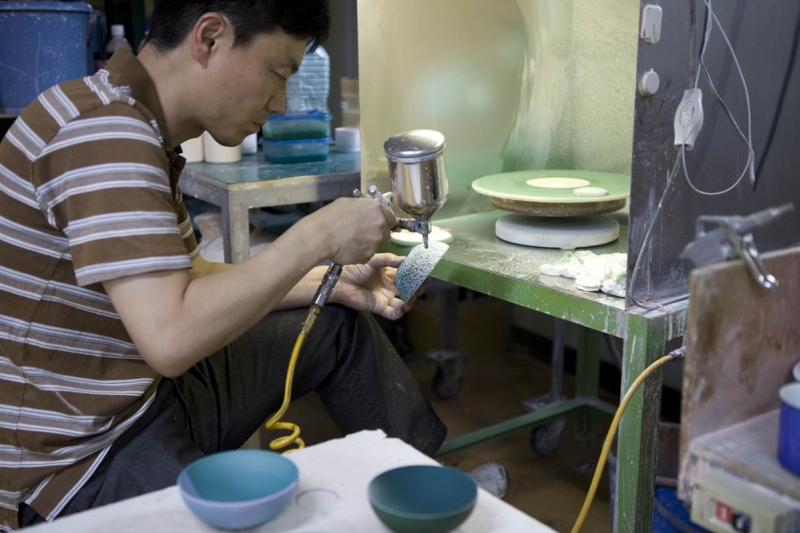Interview: Mr. Fujimoto, Fujimaki Seitou
Many of the potteries in Arita can trace their history back over hundreds of years. Fujimaki Seitou is one such company, they first began producing porcelain in Arita in 1775. Kosuke Fujimoto is the 10th generation to be inaugurated as a director of the company and is a porcelain artist as well as head of the company. Here he talks to us about what the future holds for Fujimaki Seitou.
- What kind of porcelain has Fujimaki Seitou created during its long history?
Over the generations there have been several different styles and techniques that have been successfully applied. The sixth generation won prizes for their white porcelain at a time when the pottery was largely making platters or bowls. Then, the era of the seventh generation was characterised by skilled painting and sculpture; highly decorative porcelain. In the Taisho era (beginning in 1912), we produced vessels using a specialist technique called ‘Doban Sometsuke’ that involves carving pattern on to a copper plate, printing the pattern and then tracing it onto the surface of the vessel.
- Today, one of the things Fujimaki Seitou is well known for is a special kind of celadon porcelain. When did you begin to work with this technique?
This type of porcelain was begun during my father's generation in the 1960’s and 1970’s. It is a blueish (rather than green) style of celadon that can be difficult to make. The most anxious times in the manufacturing are during molding and firing. We apply a thicker glaze for celadon than for other porcelain and so we make the porcelain itself thinner to compensate. Of course this means the porcelain is more fragile during drying, firing or cooling down. It is a complex process.
- It seems that Fujimaki Seitou has adapted its production to meet the market needs of each era. What has the past 200 years taught you about the future?
I think progress means change. Each generation of Fujimaki has produced different items according to market needs and has changed their production methods accordingly. In Arita all the labour of porcelain production has traditionally been divided and the potteries have outsurced certain procedures such as mold making. But at Fujimaki we have these facilities in-house.
- What molding processes in particular do you use?
We use casting process which involves pouring clay into a plaster mold. It can be used in mass production but, at the same time, the process makes thinner shapes which are difficult to achieve by hand.
- You also work with manufacturers from overseas, is that correct?
60% of our production is original products from Fujimaki Seitou. The remaining 40% comes from orders from other brands. We currently produce porcelain for Georg Jensen, the celebrated Danish brand.
- What are you currently working on for the 2016 / project?
We are currently experimenting with some exciting new processes that are incredibly innovative. For one product we are using waste porcelain within a glaze and for another we are intentionally trying to cause bubbles in the glaze, something that we normally go to great lengths to avoid. It is a process of trial and error for us with these new ideas as there is no precedent for them locally in Arita – they are entirely new.











